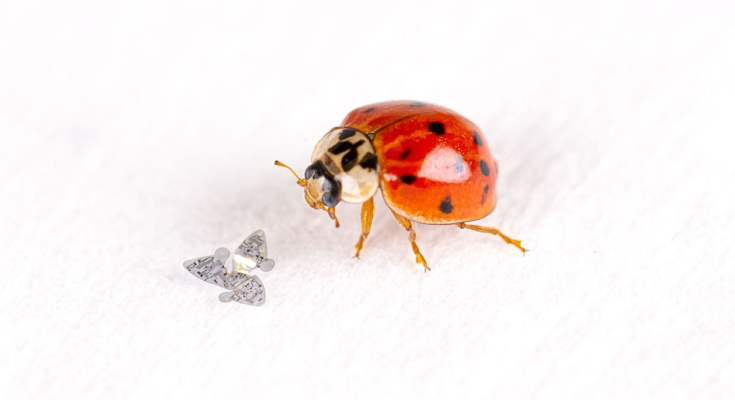
Engineers from Northwestern University have created tiny flying microchips, which they say can be used to track populations, air pollution and the presence of airborne diseases.
Roughly the size of a grain of sand, the flying microchips, or microfliers, do not have a motor or engine. Instead, the minuscule devices catch the wind and fly (or float) in a similar way to the seed pods from maple trees.
The design means that rather than plummeting from the sky, the microfliers fall at a slower rate and in a controlled manner. During this descent, they can be used to measure different conditions in the atmosphere.
According to Northwestern, the devices are the “smallest-ever human-made flying structures”, and can be packed with miniaturized technology such as sensors, power sources and antennas for wireless communication.
G/O Media may get a commission
“Our goal was to add winged flight to small-scale electronic systems, with the idea that these capabilities would allow us to distribute highly functional, miniaturized electronic devices to sense the environment for contamination monitoring, population surveillance or disease tracking,” said John A Rogers, a faculty expert at Northwestern’s McCormick School of Engineering and Applied Science.
The microscopic drones comprise two parts, a bed of electronic components and sensors, and wings to control the descent.
The electronic components include a power source that can harvest ambient energy, memory for storage and an antenna to transfer data to a smart phone, tablet or computer.

Sensors fitted to the microfliers include those capable of detecting particles in the air, atmospheric pH and sun exposure.
The researchers said they envision studies where a large ‘swarm’ of these drones is dropped from various altitudes to assess air pollution.
The devices could be used to monitor the environmental impact of chemical spills, or track levels of air pollution at different altitudes.
Dropping thousands of these tiny drones into the atmosphere could create a massive cleanup job once the microfliers reach the ground. But, the team at Northwestern has addressed managed to address this.
The lab said it can create electronics that dissolve in water when they are not needed, meaning the microfliers will naturally degrade and disappear in ground water over time.
Editor’s Note: I’ve got a real problem with Northwestern’s claim that these are flying structures. If these things fly, then so does dust. –RC



